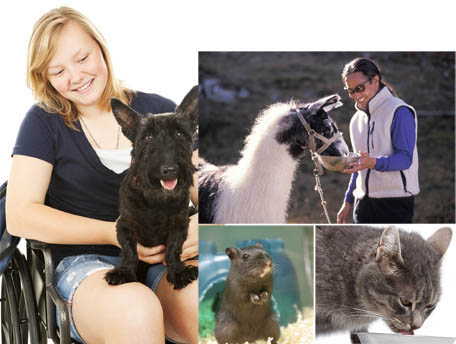Discover
Try This 1

dog: iStockphoto/Thinkstock; alpaca: Ingram Publishing/Thinkstock;
cat: iStockphoto/Thinkstock; gerbil:iStockphoto/Thinkstock
The following table defines the function P(s), which outlines what pets are owned by students.
The student ______ |
owns a pet ______. |
| Dennis | gerbil |
| Faustine | cat |
| Hyunji | llama |
| Maia | dog |
| Norwood | bird |
| Teresa | dog |
| Ronaldo | horse |
This table defines the function F(p), which gives the food eaten by different pets.
A pet ______ |
likes to eat _____. |
| gerbil | seeds |
| cat | cat kibble |
| llama | hay |
| dog | dog kibble |
| bird | seeds |
| horse | hay |
-
- Give a function, B(s), that shows the type of pet food each student should buy.
- Draw a diagram to show the relationship between P(s), F(p), and B(s).
- What type of input and output would you expect for each of P(s), F(p), and B(s)? The following table may help organize your thinking.
Function
Input Type
Output Type P(s) student
F(p) B(s)
- Describe why B(s) can be thought of as F(P(s)).
- Determine the domain and range for P(s), F(p), and B(s).

![]() Save your responses in your course folder.
Save your responses in your course folder.
Share 1
With a partner or group, discuss the following question based on the information from Try This 1:
The function F(P(s)) represents the food a student should buy. Explain what the function P(F(p)) represents and why it has no meaning in this context. ![]()
![]() If required, save a record of your discussion in your course folder.
If required, save a record of your discussion in your course folder.